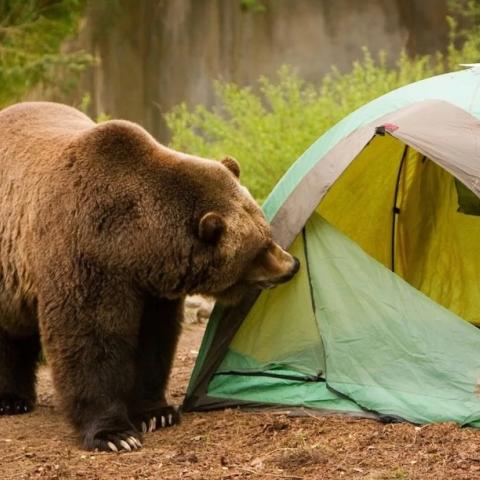
A traffic control plan for the Moose-Wilson Road in Grand Teton National Park should help reduce visitor-wildlife conflicts/NPS
A main attraction of fall in Grand Teton National Park is slowly cruising the Moose-Wilson Road to take in the changing colors and catch sights of bears munching through berry-laden bushes and moose browsing riparian vegetation. Under a plan park officials are backing, there could be days during the peak visitation windows in summer and fall when you'll have to wait your turn to enjoy the drive.
In a move to improve the visitor experience along that scenic 15-mile road, park officials have settled on a strategy to limit to 550 people -- or roughly 200 vehicles -- allowed down the road at any one time. The plan, contained within the Moose-Wilson Corridor Comprehensive Management Plan released earlier this month, also would set caps on trailhead visitors and even inside the visitor center at the Laurance S. Rockefeller Preserve.
Death Canyon— At this trailhead, 220 people can be accommodated at one time. Access to this trailhead is highly sought after. Large amounts of overflow parking occur during the summer. The capacity determination supports current use levels at Death Canyon Trailhead while also ensuring a high likelihood of access to the area and experiences of solitude while visitors hike on the associated trails.
Laurance S. Rockefeller Preserve— At this location, 120 people can be accommodated at one time. The LSR Preserve is one of the most popular destinations in the corridor. Current use levels support specific visitor capacities established during the creation of the Preserve. The capacity determination continues the current use levels at the LSR Preserve and on the trails associated with it while also ensuring that opportunities for contemplation and solitude remain.
Granite Canyon— At this location, 50 people can be accommodated at one time. Granite Canyon is a relatively lower use area in the corridor; however, winter recreation is popular at this trailhead. Current use levels support visitor opportunities to view scenic vistas and begin a variety of hikes from this location. The capacity determination continues the current use levels at Granite Canyon and on the trails associated with it.
Moose-Wilson Road— Along the roadway, 160 people can be accommodated at one time. Moose-Wilson Road itself is a destination for scenic driving as well as a way to access other destinations. The turnouts and viewing areas, such as Sawmill Ponds Overlook, associated with the road are temporary stopping areas where visitors can enjoy scenery and wildlife viewing. Current use levels support these opportunities. The capacity determination continues the current use levels along Moose Wilson Road and at turnouts and viewing areas.
Grand Teton Superintendent David Vela said park staff took public comments under consideration as they crafted the plan.
"We believe the preferred alternative as revised in response to public comment is the alternative that best fulfills the purpose and need for the plan and the mission of the National Park Service," he said in a release. "The preferred alternative provides for the best protection of the significant natural and cultural resources of the Moose-Wilson corridor including wildlife, wetlands, and the heritage of our affiliated tribes, while also providing appropriate opportunities for park visitors to use and enjoy this special area of the park."
At the National Parks Conservation Association, Sharon Mader said the plan "puts Grand Teton National Park on track to preserve the Moose-Wilson Road corridor’s unique resources for the long term. This careful planning is essential to the health of this crown jewel and its visitors and wildlife. With its stunning scenery and historic and cultural resources, a drive along the Moose-Wilson Road is one that visitors should take slowly."
Ms. Mader, the Grand Teton program manager for the NPCA, noted that the reduced vehicle traffic will not only benefit cyclists, but it should reduce "conflicts between visitors and grizzly bears, wolves and other wildlife ... with its common-sense call for closures when the animals roam close to the road.”
She also applauded the Park Service for continuing to "study visitor use to inform a future transit system. This is an incredibly important issue for this part of the park."
The plan currently is going throug a 30-day no-action period. Once that period closes, Intermountain Regional Director Sue Masica will decide whether to approve it. Once a Record of Decision has been signed, the plan can be implemented depending on funding and staffing. Full implementation of the plan is likely to take up to a decade or more, though initial work may begin in 2017, Grand Teton staff said.
More details of the plan, and the environmental impact statement that was prepared, can be found at this site.




 Support Essential Coverage of Essential Places
Support Essential Coverage of Essential Places







Comments
I found my small Kia was much more easy to navigate on moose Wilson Road then large SUVs that you see